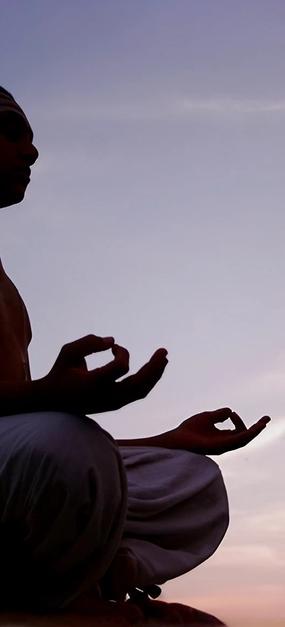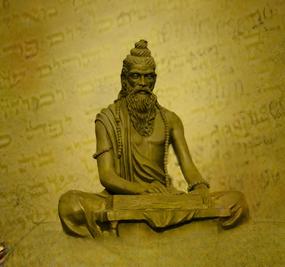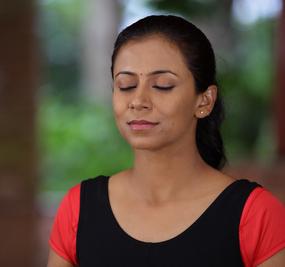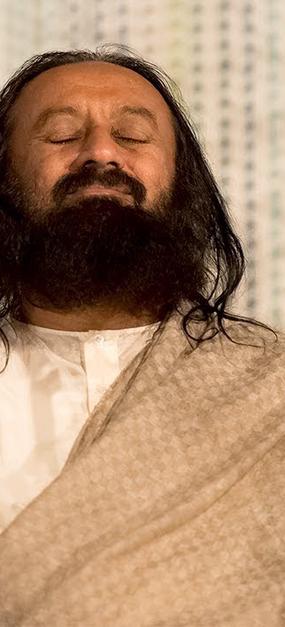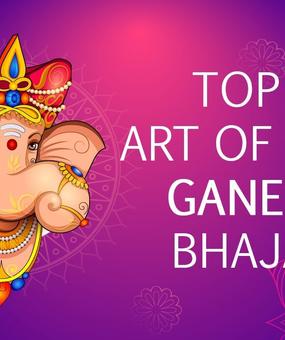Around the second century BC, there lived a rishi named Maharshi Patanjali who was the first to systematize the already existing ancient practices of yoga. Considered as the Father of Yoga, his 196 yoga sutras have become the basis of yoga practice today.
Modern notions of fitness have equated yoga to a practice that only helps us in losing weight, toning different parts of the body, and building muscles, limiting our understanding of this holistic way of life. An unfortunate consequence being that we have lost sight of what yoga is really about – all-round development of the body, mind, and spirit. A tool for us to walk the path of wisdom and enlightenment.
Particularly famous are Rishi Patanjali’s Ashtanga yoga or the eight limbs of yoga: yama, niyama, asana, pranayama, pratyahara, dharana, dhyana, and samadhi. Gurudev Sri Sri Ravi Shankar says that these eight limbs of yoga should all develop simultaneously for us to experience Divine consciousness and eternal bliss.
Patanjali on Ashtanga Yoga – The eight limbs of yoga
“Yoga anga anushtanat ashuddhi kshaye jnana dipthir viveka khyatehe’’
(II Sutra 28)
“By the sustained practice of the eight limbs of yoga, impurities are destroyed and the light of wisdom, discrimination shines forth.”
What should we do to gain this wisdom?
“Yama niyama asana pranayama pratyahara dharana dhyana samadhi ashtau angani’’
(II Sutra 29)
“Restraint, observance, postures, regulation of breath, substitute food for the mind, ability of the mind to focus, meditation, and higher states of consciousness are the eight limbs of yoga.”
Ashtanga Yoga – Eight limbs of yoga
Let us learn in detail what each of these limbs refer to.
1. Yamas – Social duties
Yamas teach us attitudes that we must follow with respect to the environment we live in. They are codes of conduct that teach us to practice restraint.
a. Ahimsa – Non-violence
“Ahimsa pratishtayam tat sannidhau vairatyagaha’’ (II Sutra 35)
“When a person is established in non-violence, then violence is dropped in his or her presence.”
Consciously choosing to walk the path of non-violence, dropping all intentions that lean towards destruction because the very intent can destroy your basis and root.
When you are rooted in ahimsa, your aura influences those around you. When you practice ahimsa, you become peaceful within, and when you become peaceful within, you tend towards ahimsa. It is a two-way street.
b. Satya – Truth
“Satya pratishtayam kriya phala shrayatvam’’ (II Sutra 36)
“When a person is established in truth then the fruits of action will follow.”
Deep within us, there is an unchanging quality and this yama refers to that. It is not merely in words that we must be truthful. It is through our actions, in our heart and mind, and the intention that really counts. It is the depth of our very core that should tend towards the unchanging. That is satya.
c. Asteya – Not stealing
“Asteya pratishtayam sarvara ratna upasthanam” (II Sutra 37)
“When non-stealing is established, all the jewels (wealth) approach the person.”
We must not by action, deed, or thought seek to gain anything that is not rightfully ours. Stealing does not only refer to property – physical, intellectual or material things; it also refers to thoughts.
When we are established with an intention to not steal and are sincere, wealth will come effortlessly.
d. Brahmacharya – Celibacy
“Brahmacharya pratishtayam viryalabhaha” (II Sutra 38)
“On being established in celibacy, vigor is gained.”
The meaning of brahmacharya is not simply celibacy. It means to move in infinity. When we meditate, we forget the body, mind, and all senses, and move in infinite consciousness. This connects us with our vast nature. This bestows strength and vigor. Not indulging in the whims and fancies of the senses, and uniting with the infinite consciousness within can make us powerful. That is the meaning of brahmacharya.
e. Aparigraha – Not coveting
“Aparigraha sthairye janmakathanta sambodhaha” (II Sutra 39)
“Being established in non-accumulation gives knowledge of all past and future births.”
Aparigraha refers to not accumulating things or taking anything from anyone – being happy and content in our own existence. And realizing that giving is the greatest joy. When we give something to someone, the positive vibrations come back to us.
2. Niyamas – Personal rules
“Shaucha santoshatapaha swadhyaya ishwarapranidhanani niyamaha” (II Sutra 32)
“Cleanliness, contentment, penance, self-study, and devotion to the divinity are the five rules or niyamas.”
Niyamas are practices that cultivate us and help us to uphold our dharma:
- Shaucha (cleanliness): Maintaining physical purity (external cleansing through bathing and internal cleaning through drinking water) and purity of the environment in which we live as well as mental purity- being free from anxieties
- Santosha (happiness, contentment): Being unconditionally happy – no matter what – and realizing our true nature
- Tapaha (penance, spiritual austerities): Burning of negative thoughts through discipline and austerity so that we can go deep within our Self, reposing in silence
- Svadhyaya (self-study): Reading scriptures but learning through experiences and reading, to gain better understanding of the Self
- Ishvara pranidhana (devotion or surrender to the Divine): Seeing life in the context of the vast universe – diving into the infinite and vast consciousness that is filled with love, beauty, and truth, and surrendering to it
Read more on how the yamas and niyamas make sense in the modern world here.
3. Asanas – Physical postures
“Sthirasukhamasanam’’ (II Sūtra 46)
“That posture which is steady and comfortable is āsana.”
Asanas are physical postures that help settle the body for meditation. It ensures that the body is fit and healthy, free from disease and restlessness. It is important for the physical self to be healthy as it prepares us to dive within and explore the inner Self. Equilibrium at the physical level enables balance at the mental, intellectual, and, ultimately, spiritual level.
4. Pranayama – Control of breath
Prana means life force. Breathing techniques that promote our life force are pranayamas. Rishi Patanjali says retention and splitting of breath in a special way and changing the rhythm of the breath, is pranayama. When we break the movement of the breath by consciously breathing long breaths with counts while paying attention to different parts of the body, it clears impurities from the mind.
5. Pratyahara – Conscious withdrawal of senses
This is a state when the senses don’t engage with the external environment instead turning inwards towards the consciousness. In this state, it is easier to control the senses. We have five sheaths or layers, Pancha Kosha, that envelop the inner Atman or consciousness:
- Annamaya Kosha – the food sheath
- Pranamaya Kosha – the breath sheath
- Manomaya Kosha – the mind sheath
- Vijnyanmaya Kosha – the intellect sheath
- Anandamaya Kosha – the bliss sheath
Through meditation, one can penetrate and transcend the koshas. And ultimately connect with the consciousness, the objective of pratyahara.
Dharana and Dhyana are often synonymously used. Let’s explore how one leads to the other.
6. Dharana – Attention
This refers to paying attention to one particular thing, idea, or place and fixing it there. Sometimes, people use a mantra or the breath to do this. When you fix your mind on a specific point, over time, your mind stops wavering; you become free from conflict; it is a unique time when your thoughts and actions are in congruence. So, you slowly and steadily still yourself and calm down as you merge with the moment. As you become one with the moment, you can effortlessly enter meditation or dhyana.
7. Dhyana – Meditation
In this state, you observe your mind becoming still. An outcome of meditation is concentration. In the meditate state, you also achieve deep rest which leads to samadhi.
8. Samadhi – Absorption with the Self
This is the ultimate state of consciousness. It is a transcending thought. You are only aware of your Self and are connected to your true nature – love, joy, and strength. This is the ultimate goal that we seek to achieve in life.
If you have been used to thinking of yoga for beginners as simply asanas, we hope that this has helped broaden your outlook aiming towards complete well-being rather than only physical well-being. With these eight limbs of yoga, you will learn how to control your body, senses, and mind. To move towards your inner Self till you ultimately come in touch with your consciousness. Where you are endless, vast, infinite.
Based on knowledge sheets based on Gurudev Sri Sri Ravi Shankar’s commentaries on Patanjali Yoga Sutras and inputs by Pramod Timsinaa, Faculty, Sri Sri School of Yoga



